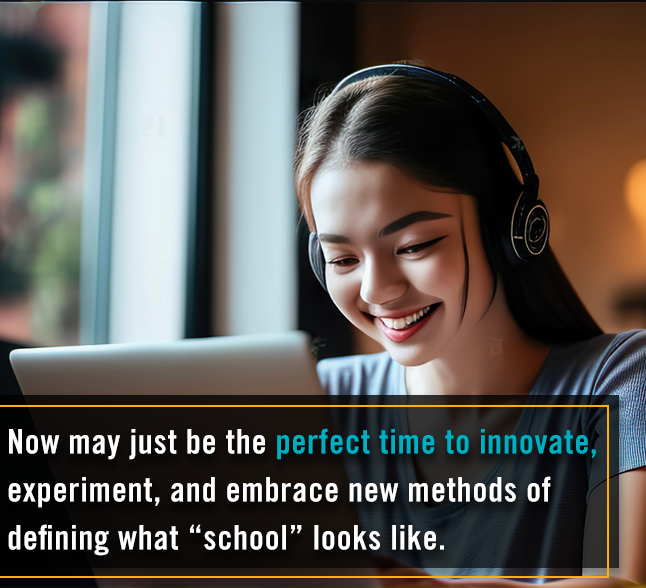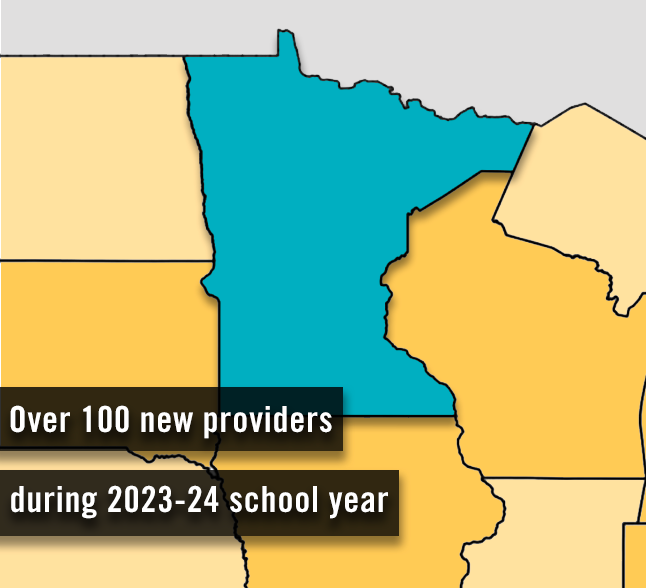The Possibilities for Online Learning Post-Pandemic
Blog Author: Tracy Quarnstrom
Tracy L. Quarnstrom has served as the director of Wolf Creek Online High School since 2003. Wolf Creek is Minnesota’s only hybrid online high school that offers students an online experience while still offering the advantages of face-to-face interactions several days per week. Quarnstrom has been very involved in the creation of online learning legislation in the state of Minnesota as well as in organizations that promote quality online choices for students and families. She is a founding member of MNOLA (Minnesota Organization for K12 Online Learning Alliance), a cooperative organization that promotes equity in online experiences across the state of MN. Tracy has served as a mentor and coach for many virtual leaders across the state in her 25 years of serving in her role as charter school director.
As we recognize the three-year mark since the day the world locked down for the COVID 19 virus, we must also look within ourselves as educators and ask ourselves some difficult questions. Questions such as, “What elements of educating students have significantly changed since the beginning of the pandemic?”
We need to take the time that is often not available to use in educational circles to identify changes to what a student experience can look like in the post pandemic world. We remember the times of rapid change in education to a virtual school model as one that was completed with considerable trepidation and riddled with anxiety. We should now spend time considering what a change from a rapid model of crisis virtual schooling to a more successful and sustainable model of virtual schooling can look like for all of us — students, their families, teachers, and administrators. In what sense can we envision all students feeling seen and heard from adults in their school in a safe and supportive environment?

Some have noted this thoughtful analysis of educational changes or what we want to keep from COVID times, as simply COVID keepers. Few can argue that the influx of federal funds that allowed for all students to access technology and internet connectivity was anything but positive. The need to support all learners in their own homes, and in a variety of ways, make us innovate at a rate not seen before in education. Maybe now is not the time to stop that movement forward.
I would argue that now may just be the perfect time to continue to innovate, experiment, and embrace new methods of defining what “school” looks like for our students. For years the virtual educational classroom brought possibilities of personalized learning, students learning at their own academic levels, and at their own pace.
We should acknowledge that some students wanted to return to a brick-and-mortar school experience, and many will find success there. Even with that being acknowledged, it is important to note that many new virtual elements can be seen being integrated into successful brick-and-mortar schools. Families did get a sense of school working with their home life and being more flexible, which has remained a demand for some families. New hybrid school models and traditional school districts adding virtual and online academies are on the rise across our nation and reflect this new understanding of what school could be.

Minnesota alone saw an increase from 40 online providers to over 100 online providers during the 2022-2023 school year. This influx in virtual choices allows families an advantage when selecting a virtual model that works for them. Some virtual schools have a campus option, some provide more synchronous opportunities, while others are tied to larger school systems that allow for students to remain enrolled in sports and activities. All of these options are good for families and allow programs to grow and prosper.
As we all consider the needs in our own districts and school options to incorporate virtual elements, please remember that at the core is student and family choice, a need for flexibility, and a need to provide high quality curriculum options tailored to student needs. Along with student support services and a dedicated group of educators, you can’t go wrong as we enter this new era of post-pandemic learning.
